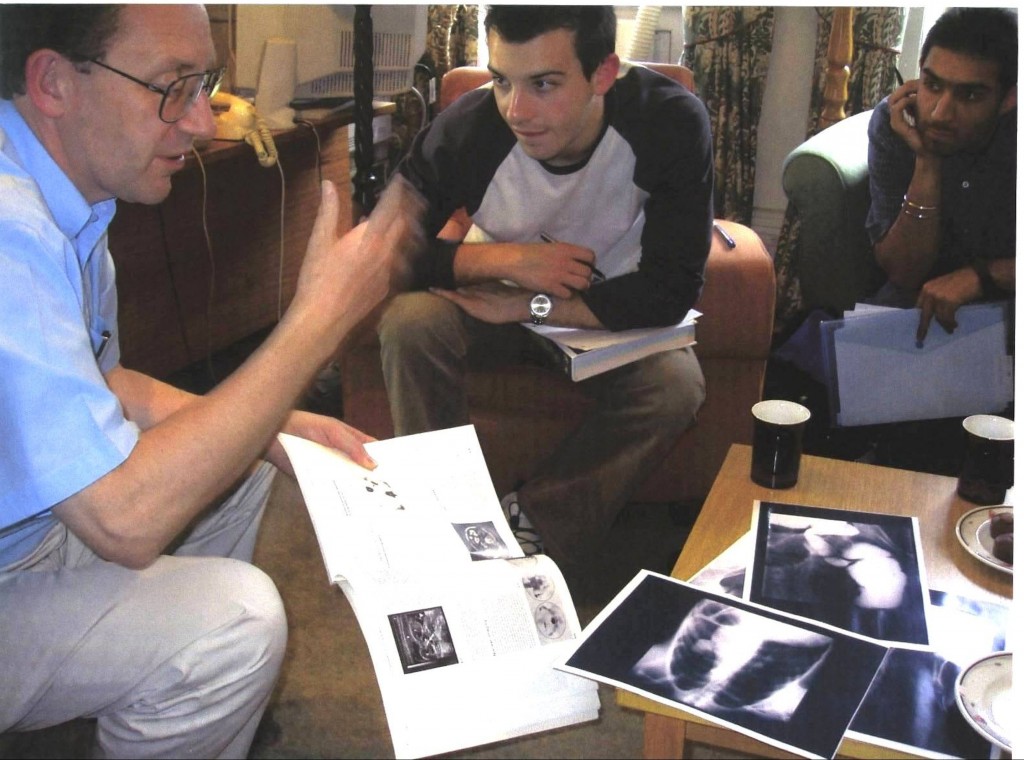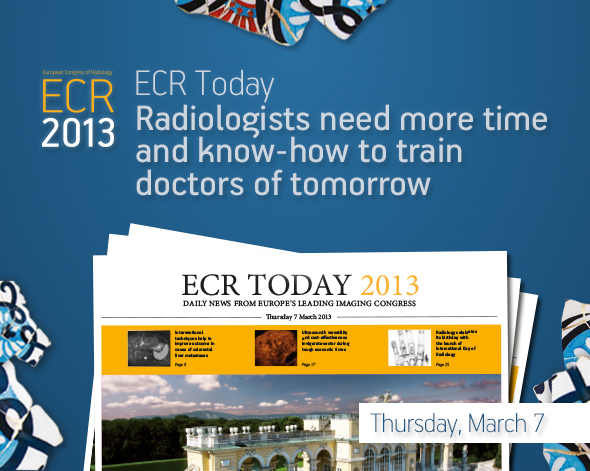Radiologists need more time and know-how to train doctors of tomorrow
Watch this session on ECR Live: Thursday, March 7, 16:00–17:30, Room F1
Postgraduate radiology training is high on the agenda in Europe, with a great deal of attention in recent years being given to the harmonisation of educational standards across the continent, but there is a growing feeling within the discipline that radiology should not lose sight of the equally important issue of undergraduate education. Exposing undergraduates to radiology not only serves the obvious and vital purpose of inspiring potential radiologists, but also ensures that students who go on to follow careers in other disciplines are well versed in what radiology can offer and how it operates. In broad terms, the net result is a combination of helping to secure the discipline’s future and making life easier for its practitioners.
However, making sure undergraduates are given sufficient contact with radiology is no easy task. The competing clinical, managerial and academic demands on radiologists’ time and skills, which increase with every year, mean that any additional activities run the risk of being excluded. The time and resources needed, not just to teach, but also to carry out the necessary preparation for effective teaching, can often make it impossible to fit in to an already hectic schedule.

Professor Stephen J. Golding (left) from Oxford will chair today’s Professional Challenges Session on undergraduate teaching.
Despite the obstacles, there are still those who are passionate enough about teaching medical students to make it a priority. Unsurprisingly, the nature of teaching across Europe is inconsistent, but at a large proportion of educational centres there is at least one person teaching radiology to undergraduates, as discovered by a survey carried out by the ESR Education Committee’s Working Group on Undergraduate Education, in 2010. The working group itself was initially proposed by a collection of motivated educators, and its conversion into a formal ESR Subcommittee in 2012 further demonstrates that the issue is being taken increasingly seriously.
Following a successful introductory session held by the former working group last year, the new subcommittee will host a Professional Challenges Session at ECR 2013 under the title ‘Bringing radiology to undergraduates’. The session, which is chaired by Dr. Stephen J. Golding, from the University of Oxford, UK, who is also the chairman of the Undergraduate Education Subcommittee, will look at undergraduate teaching from a variety of angles, addressing the major challenges in providing good radiological education and offering some potential solutions.
“Undergraduates are going to be the doctors of tomorrow; we need them to practice effectively and efficiently and we preferably need them to use radiology effectively,” said Golding. “We want physicians to be enlightened as to the possibilities of radiology for their patients and how best to use the radiology service, and that means they have to have that training. Some of them are also going to be the radiologists of the future, so undergraduate exposure gives us a chance to impact on them at a time when they are thinking about their careers.”
“Unfortunately the pattern of teaching activity is very variable, there is very little in the way of teacher training available, especially that which is specific to radiology, and of course finding time is a major problem in the working lives of most radiologists. We very much see this session as tackling some of the major difficulties that the teaching radiologist may have, especially in terms of the rising demands on radiologists. Inevitably we have to concentrate on clinical demand and training our juniors and there is a real risk that there is very little time left for anything else.”
Before time, resources, and methods come into the equation, radiology must first have an established place in the undergraduate curriculum, which relies on representatives of the discipline being involved in or influencing the management structure of medical schools. This means the degree to which radiology is present in curricula usually depends on the commitment of radiologists to the cause – often the same radiologists who will actively participate in teaching – but the strength of the subject is that it has so much to offer in supporting the teaching of other subjects in the curriculum, such as anatomy. Ideally, the teaching radiologist needs a comprehensive understanding of the overall needs of the undergraduate, as well as the skills to teach efficiently and knowledge of the available educational methods that are appropriate to the speciality.
All of these issues are currently the responsibility of the individuals or groups who take on the task of teaching or planning undergraduate radiology education in their own institutions, but one way to make things easier in the future may be through networking and cooperation.
“As long as you have someone in the department who has the insight that this is good work and worthwhile, then you’ve got something to work with. One of the objectives of the subcommittee is to try to bring together those efforts from around Europe and to try to coordinate that activity, and possibly create a network where teaching radiologists can compare notes and experiences,” said Golding.
“Our intention with the panel discussion at the end of this session is to hear what’s going on from the floor. The audience will have had a chance to hear what the experts say, but we need to hear what the jobbing radiologist thinks, what they find valuable, what their needs are, what they can’t do because of constraints, and so on. The most important thing is that we can’t afford to ignore the undergraduates, no matter how great the competition for our time and our work might be. They are our future, and they will help to make our lives easier if they are properly trained,” he added.
Professional Challenges Session
Thursday, March 7, 16:00–17:30, Room F1
PC 3: Bringing radiology to medical undergraduates
• Chairman’s introduction: why does it matter?
S.J. Golding; Oxford/UK
• Establishing a radiological presence in the undergraduate curriculum
R.N. Gibson; Melbourne, VIC/AU
• Finding the time and resources in the radiology department
J.L. del Cura; Bilbao/ES
• Involving the undergraduate with the radiology department
K. Verstraete; Gent/BE
• How to ensure teachers are suitably trained
E. Szabó; Szeged/HU
• Panel discussion: What needs to be done to overcome the constraints on radiologists?


